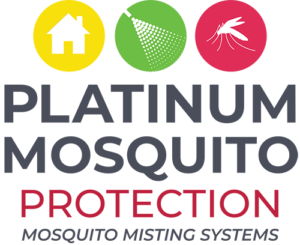Inside the lifecycle of this infamous insect
When it comes to most insects, people usually either like them, hate them, or, at the very least, are fascinated by them. Except when it comes to the infamous mosquito.
Around the globe, there are 3,500 species of mosquitos, and many are despised, especially Aedes aegypti, the species responsible for spreading diseases like Zika. Nevertheless, by learning a little bit about their lifecycle, we can better understand ways of depleting their numbers in our yards and gardens.
Stage 1: Egg
It all begins with an egg – hundreds of them, to be exact. Adult females, after feeding on blood (more on that later), will lay their eggs on the surface of the water, either singly or in rafts of up to 300 eggs.
There are two categories of mosquito eggs:
- Permanent water eggs are laid on the water surface and will not survive if they dry out. Think of this as the water found in lakes or swamps.
- Floodwater eggs are laid on a moist surface, but not standing water. These eggs require a period of drying time, and will hatch if the area is flooded by rain or high tides. Aedes aegypti falls into this category. Eggs are laid on the wet walls of containers holding water. They can remain viable for up to 8 months in this dried state. Once submerged in water – after a rainstorm, for example, when the container fills up with water – the eggs will hatch immediately.
Speaking of A. aegypti, this species has very specific egg-laying behavior. The female mosquito will lay her eggs separately, spread out over hours or days, and at several locations.
Stage 2: Larvae
Look into a container of standing water in your yard, and chances are you’ll see some wriggly and wiggly things just under the surface. Those are mosquito larvae. At this stage, they are feeding on microscopic organisms and organic particles.
During this stage, the larvae will shed or molt its skin four times. Each period is known as an instar. They spend a short amount of time in the first three, and up to three days in the fourth instar.
If temperatures are cool – which they are at this time of year in South Florida – A. aegypti larvae can remain in this stage for months, as long as the water supply is sufficient. As the temperature warms, they will continue on to the next phase.
Stage 3: Pupae
Even during this stage of development, the mosquito remains in the water. Shaped like a comma, the pupa is composed of two parts: the cephalothorax (head and thorax) and the abdomen (tail).
Mouthparts, legs, and wings are developing in sheaths on the underside of the cephalothorax. Since it has no functioning mouth, it does not feed, but it can respond to stimuli. A. aegypti will remain in this stage for approximately two days.
At this point, air is ingested, expanding the abdomen to split open the pupal case. The adult mosquito emerges head first.
Stage 4: Adult
After emerging, adult mosquitos feed on plant nectars, much like honeybees, for energy. The female adult, however, will also require blood so her eggs can mature prior to being laid. Unlike other mosquito species, A. aegypti prefers to feed on humans.
Once the thirst for blood has been satisfied, the female will look for water sources to lay eggs, the amount of which is dependent upon the size of her blood meal. In addition, A. aegypti can produce up to five batches of eggs during her lifetime.
The lifespan of the mosquito is dependent upon species, but most live 2 – 4 weeks, depending on environmental conditions.
Watching out for water
The common denominator in each of the mosquito’s life stages is water. It’s the biggest reason why municipal authorities, health experts, and the Platinum Mosquito Protection team cannot stress enough the need for vigilance when it comes to any object that can collect water in your yard and neighborhood.
A little bit of proactive behavior on your part can disrupt the mosquito’s development and reduce its population.
Still, that may not be enough for homeowners in South Florida, where puddles can gather anywhere, particularly during the rainy season. That’s why we’re proud to offer our automatic misting system. For a free onsite consultation, fill out our online form – so you and your family and friends are plagued by the mosquito lifecycle.
Go back to Everything You Never Wanted To Know About Mosquitos

